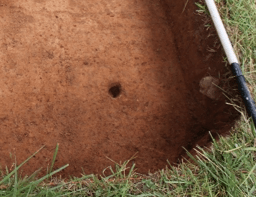Yesterday was Groundhogs day! A day when Punxatawney Phil (or Buckeye Chuck, or Woodstock Willie, depending on what state you live in) climbs out of his borrow and decides if it will be an early spring or 6 more weeks of winter based on the presence of his shadow.
This day originated from a Christian Holiday called “Candlemas” where Christians would bring their candles to the church to have them blessed and ensure their household was blessed for the rest of the winter. Over the years, this tradition became a day of weather prediction as they believed that if there was good weather and bright skies on Candlemas, winter would continue, but if it was cloudy spring would arrive soon.
As this tradition spread to other countries in Europe, the Germans had a variation that included a hedgehog seeing its shadow. Then, as German settlers arrived in Pennsylvania and other nearby regions, it became a groundhog that was the prognosticator for a continued winter or an early spring.
This year, a few members of the upper cohort went this year and saw Phil proclaim that we will have 6 more weeks of winter to the crowd’s exasperation. As I stood there cursing Phils’ prediction and dreading a longer snowy and bitter-cold Indiana winter, I began to think of other ways rodents tend to interfere with the environment and make archaeologists’ jobs harder.
Both present-day, and past rodents share an affinity for burrowing and creating tunnel systems under the ground that has a habit of disturbing sites throughout the United States. Their burrows tend to have a different color and texture than the surrounding soil making them stand out. Not only can they trip up archaeologists who might assume these rodent burrows are archaeological features (guilty), but they make it increasingly difficult to understand the stratigraphy of the site. Additionally, their back dirt tends to include artifacts that are thrown out of context and into upper levels, sometimes meters away from their original location. If that’s not enough, their borrowing can also disrupt larger features and artifacts caches which travel down centimeter by centimeter as the ground around them is displaced by the rodent.
We can’t always blame rodents, because humans have a history of disturbing archaeological sites just as much as they do. Plow scars and cut-and-fill areas are just two examples of the ways that different occupations of people can interfere with the features of a site. Lucky for us, Harris Matrices can help us understand and analyze the stratigraphy of a site including areas that have been bisected by rodent burrows or plow scars. All you need is plain gridded paper (or Excell) and a lot of patience as you start to relate the different stratigraphic levels to each other by context and characteristics. After your finished, your matrix will hopefully look like the one depicted here and will let you understand how each deposit relates to others.
So, while rodents do seem to make our lives harder as archaeologists, especially by predicting more winter which could curtail our spring field projects. We have tools that make it easier to understand why some artifacts are out of context and where the rodent borrows disrupted natural stratigraphy. Given this, I think it’s fair to say that groundhogs are our frenemies.
Further Reading:
https://www.groundhog.org/legend-and-lore
https://thesubversivearchaeologist.net/category/burrowing-rodents/
https://germannaarch.wordpress.com/2021/07/12/rodent-burrows-into-our-heart-and-our-site/


